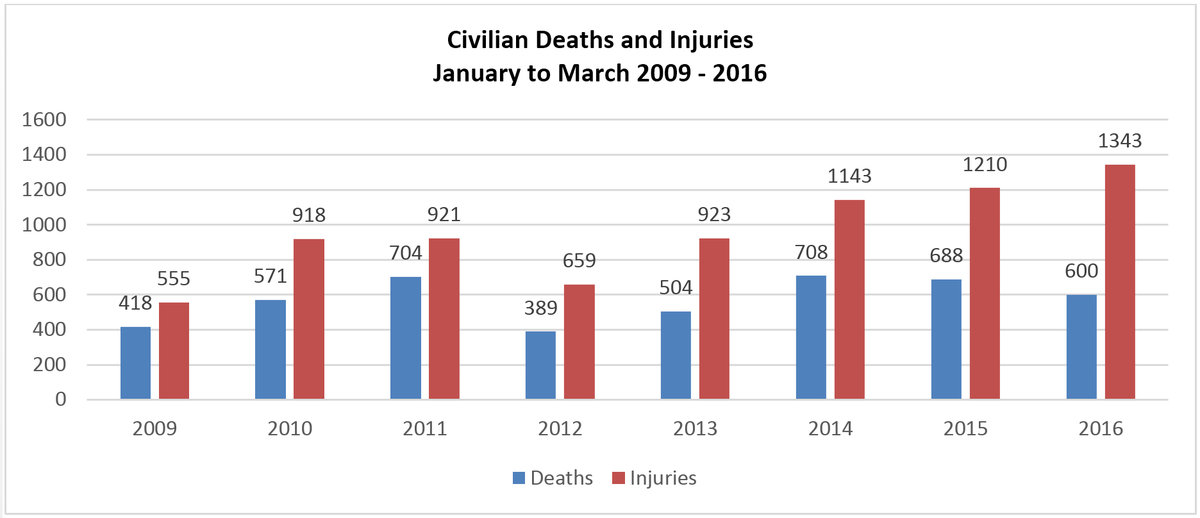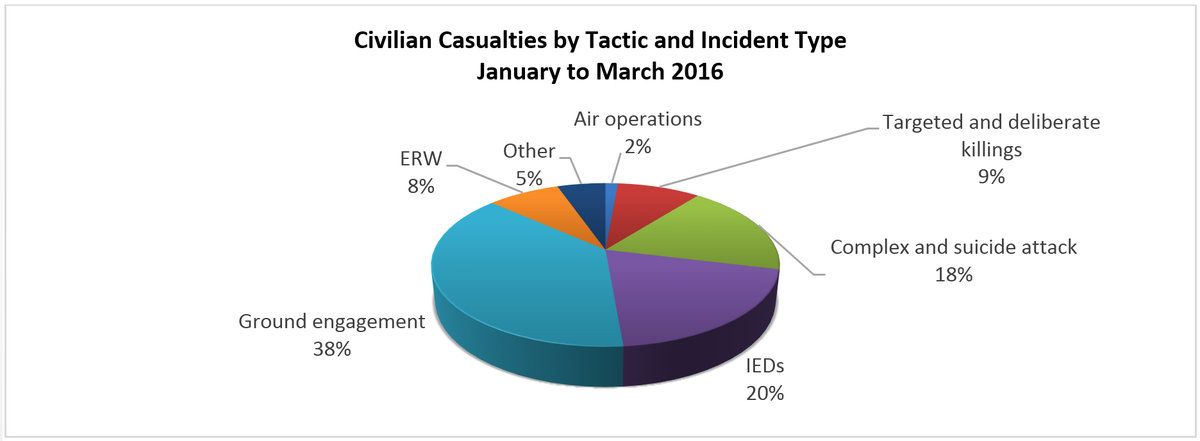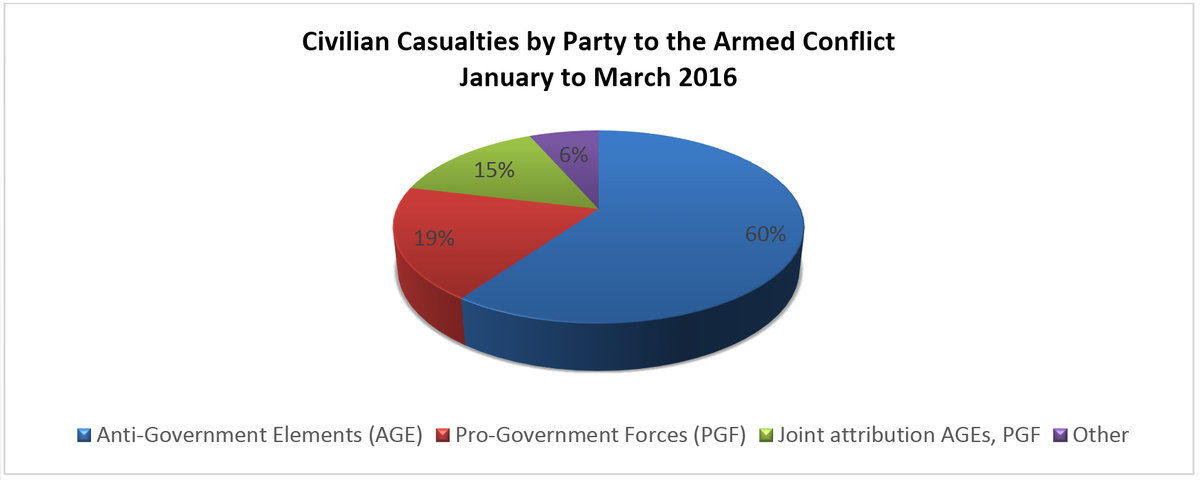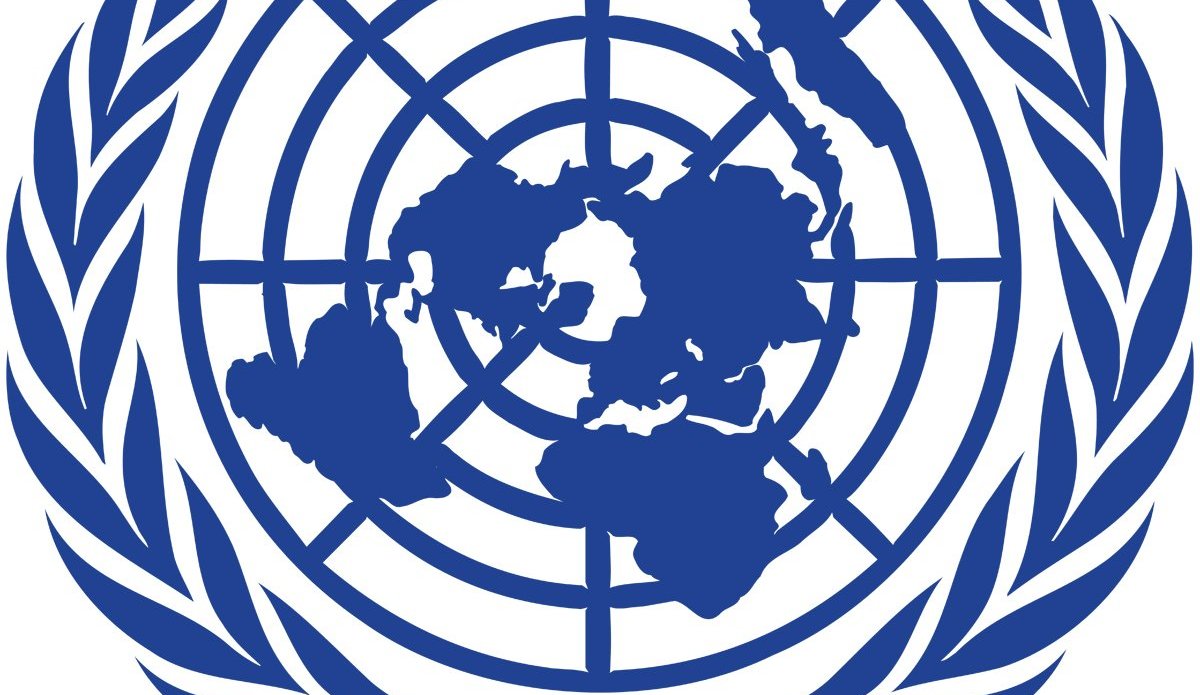UN chief in Afghanistan: Do more now to protect civilians - UNAMA releases civilian casualty data for the first quarter of 2016
KABUL - The UN Assistance Mission in Afghanistan (UNAMA) calls on all parties to the conflict to take precautions to protect civilians during operations. The release of the first quarter civilian casualty data for 2016 showed continued record numbers of civilian casualties.
“Even if a conflict intensifies, it does not have to be matched by corresponding civilian suffering provided parties take their international humanitarian law and human rights obligations seriously,” said Nicholas Haysom, the Secretary-General’s Special Representative for Afghanistan and head of UNAMA. “Failure to respect humanitarian obligations will result in more suffering in a nation that has suffered enough.”

UNAMA documented 1,943 civilian casualties (600 deaths and 1,343 injured) in the period between 1 January and 31 March 2016. These figures mark an overall increase in civilian casualties of two per cent compared to the same period in 2015 with a 13 per cent decrease in deaths but an 11 per cent increase in injuries. Consistent with 2015 trends, ground engagements caused the highest number of total civilian casualties, followed by improvised explosive devices (IEDs), complex and suicide attacks, as well as targeted killings.
Actions by Anti-Government Elements caused at least 60 per cent of casualties while Pro-Government Forces caused at least 19 per cent. 16 per cent of civilian casualties resulted from fighting between Anti-Government Elements and Pro-Government Forces which could not be attributed to a specific party. Unattributed unexploded ordinance were responsible for the remaining casualties (six per cent).

In the first quarter of 2016, UNAMA documented 1,162 civilian casualties (362 deaths and 800 injured) caused by Anti-Government Elements. This represents a 15 per cent decrease compared to the same period in 2015, primarily due to a significant decrease in casualties from targeted killings (179 casualties – 103 deaths and 76 injured) and a 17 per cent decrease in casualties attributed to IEDs (385 casualties – 113 deaths and 272 injured). The decrease in IED-caused civilian casualties resulted largely from a 15 per cent decrease in civilian casualties from pressure-plate IEDs (168 casualties – 69 deaths and 99 injured). UNAMA reiterates that pressure-plate IEDs are indiscriminate killing devices and calls upon Anti-Government Elements to immediately cease their use and remove any devices already emplaced.
UNAMA welcomes the decreases in casualties associated with these tactics as compared to the same period last year, but notes with concern the 26 per cent increase in civilian casualties from complex and suicide attacks (354 casualties - 86 deaths and 268 injured). UNAMA calls once again on Anti-Government Elements, specifically the Taliban, to cease the use of complex and suicide attacks on civilian targets and to apply a definition of civilian target consistent with international humanitarian law. UNAMA condemned the 20 January Taliban suicide attack on the Moby Group staff shuttle bus that killed eight civilians and injured 30 others and notes with particular concern the group’s continuing threats to independent media outlets in Afghanistan.
Pro-Government Forces caused 369 civilian casualties (127 deaths and 242 injured) during the same period. Although this figure is significantly lower than casualties attributed to Anti-Government Elements, UNAMA notes with concern that it represents a 70 per cent increase compared to the same period in 2015. Pro-Government Forces caused 85 per cent more civilian casualties during ground engagements than in the first quarter of 2015 (288 casualties – 96 deaths and 192 injured) – overwhelmingly due to the use of explosive weapons such as mortars, rockets, and grenades. UNAMA calls on the Government to restrict the use of such weapons in civilian areas and to thoroughly investigate negligent use of such weapons.
UNAMA notes with particular concern an increase in civilian casualties from aerial operations by both the Afghan Air Force and International Military Forces in the first quarter of 2016, with 27 casualties (six deaths and 21 injured) compared to 16 civilian casualties during the same period in 2015. UNAMA urges Pro-Government Forces to redouble efforts to ensure that all feasible safeguards are put into place to ensure that civilians are not harmed during aerial operations. Both the Government and NATO/Resolute Support must ensure prompt investigations are conducted into all aerial operations should there be credible allegations of civilian casualties.
UNAMA commends the Government of Afghanistan for the progress made in developing the National Civilian Casualties Prevention and Mitigation Policy and urges the Government to finalize the policy and begin implementation. The Mission believes that the establishment of a dedicated entity to investigate incidents of conflict-related harm to civilians is necessary. Perpetrators of human rights violations must be held accountable.

UNAMA notes with extreme concern that increased fighting in populated areas continues to kill and injure women and children at higher rates than the general population. The Mission has documented a five per cent increase in women casualties (195 women casualties – 52 deaths and 143 injured) and a 29 per cent increase in child casualties (610 children casualties – 161 deaths and 449 injured) compared to the first three months of 2015. Ground engagements caused the highest number of women casualties, followed by suicide and complex attacks, and IEDs. For children, ground engagements killed and maimed the most, followed by unexploded ordinance and IEDs.
“In the first quarter of 2016, almost one third of civilian casualties were children,” said Danielle Bell, UNAMA’s Human Rights Director. “If the fighting persists near schools, playgrounds, homes and clinics, and parties continue to use explosive weapons in those areas – particularly mortars and IED tactics, these appalling numbers of children killed and maimed will continue.”
 UN
UN







